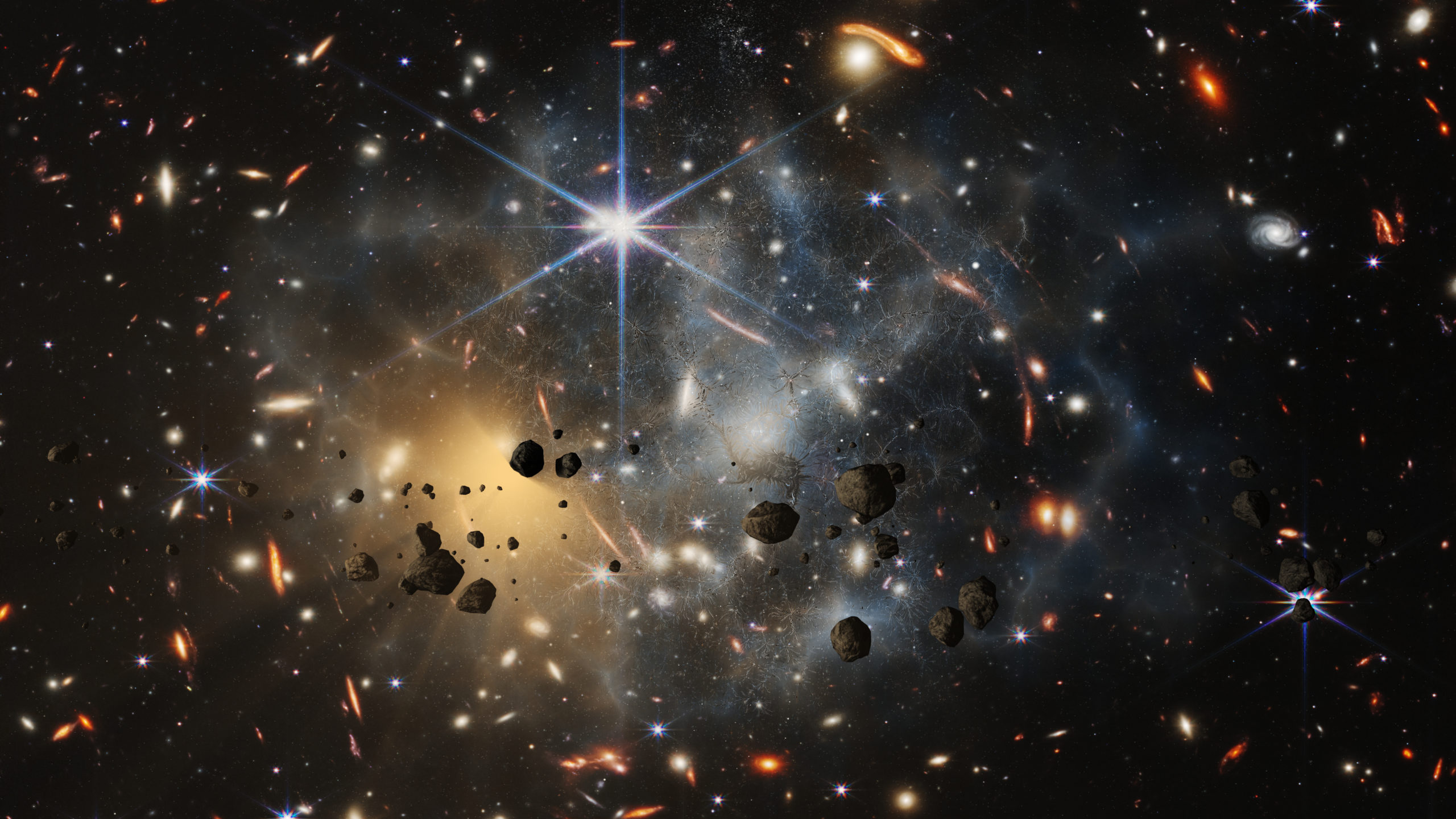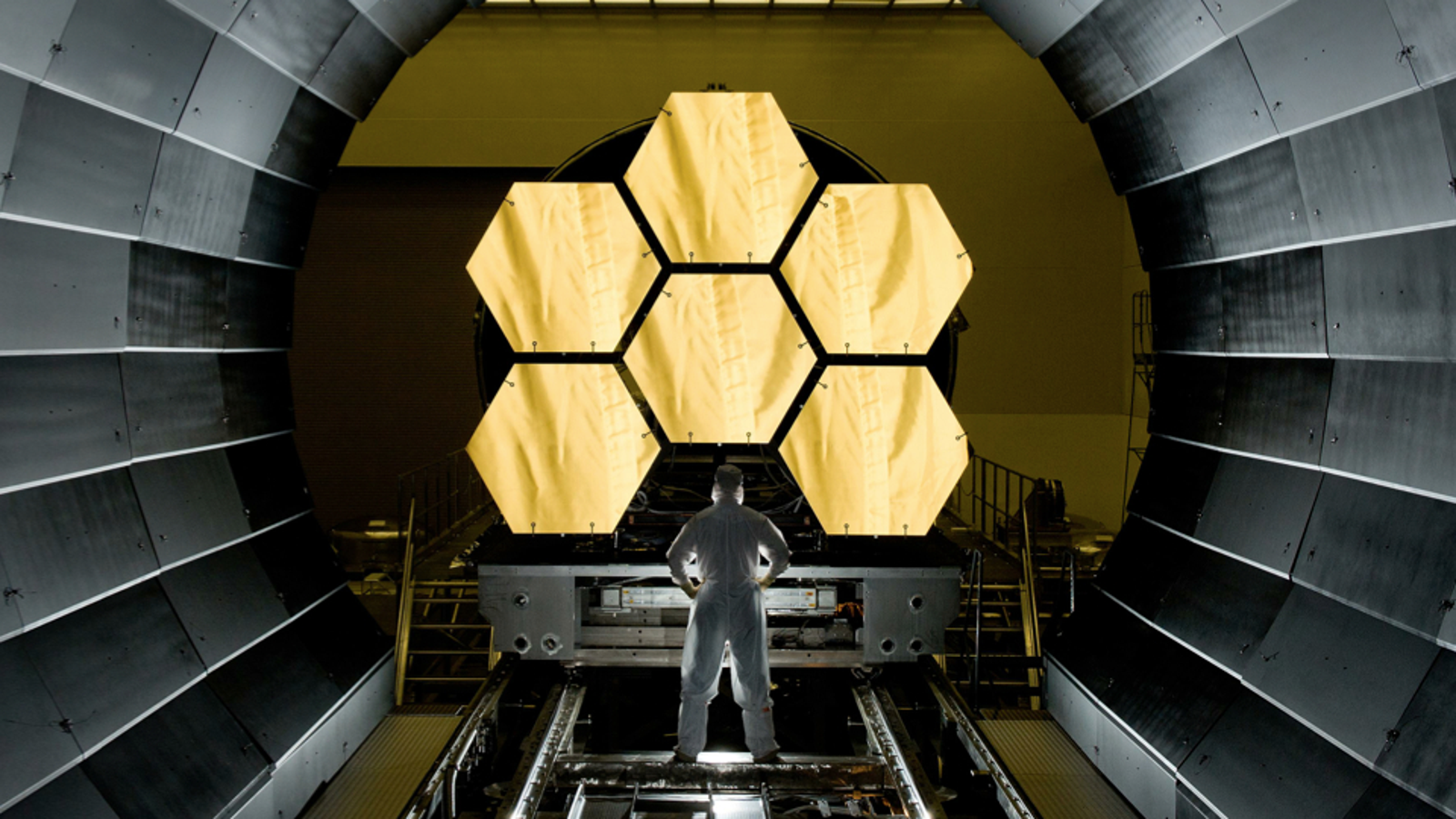
How far back past 13 billion years did that first image look? NASA didn’t provide any estimate Monday. The plan is to use the telescope to peer back so far that scientists will get a glimpse of the early days of the universe about 13.7 billion years ago and zoom in on closer cosmic objects, even our own solar system, with sharper focus. Then the lengthy process began to align the mirrors, get the infrared detectors cold enough to operate and calibrate the science instruments, all protected by a sunshade the size of a tennis court that keeps the telescope cool. It reached its lookout point 1 million miles (1.6 million kilometers) from Earth in January. The world’s biggest and most powerful space telescope rocketed away last December from French Guiana in South America.


#James webb deep field update
The pictures on tap include a view of a giant gaseous planet outside our solar system, two images of a nebula where stars are born and die in spectacular beauty and an update of a classic image of five tightly clustered galaxies that dance around each other. SMACS 0723 can be viewed near the constellation Volans in the southern sky.And even more is coming Tuesday. Among the results, it proves that one of the galaxies has a mirror image. NIRSpec data also demonstrate how detailed galaxy spectra will be with Webb observations.įinally, Webb’s Near-Infrared Imager and Slitless Spectrograph (NIRISS) used Wide-Field Slitless Spectroscopy to capture spectra of all the objects in the entire field of view at once.

The data revealed light from one galaxy that travelled for 13.1 billion years before Webb’s mirrors captured it.
#James webb deep field full
Webb’s Near Infrared Spectrograph (NIRSpec) microshutter array observed 48 individual galaxies at the same time – a new technology used for the first time in space – returning a full suite of details about each. In addition to taking images, two of Webb’s instruments also obtained spectra – data that reveal objects’ physical and chemical properties that will help researchers identify many more details about distant galaxies in this field. Webb spectrum showcases galaxy’s composition This field was also imaged by Webb’s Mid-Infrared Instrument (MIRI), which observes mid-infrared light. Much more about this cluster will be revealed as researchers begin digging into Webb’s data. This image shows the galaxy cluster SMACS 0723 as it appeared 4.6 billion years ago, with many more galaxies in front of and behind the cluster.

Researchers will continue to use Webb to take longer exposures, revealing more of our vast Universe. This deep field, taken by Webb’s Near-Infrared Camera (NIRCam), is a composite made from images at different wavelengths, totaling 12.5 hours – achieving depths at infrared wavelengths beyond the Hubble Space Telescope’s deepest fields, which took weeks. The combined mass of this galaxy cluster acts as a gravitational lens, magnifying more distant galaxies, including some seen when the universe was less than a billion years old. Webb’s image is approximately the size of a grain of sand held at arm’s length, a tiny sliver of the vast universe. Known as Webb’s First Deep Field, this is galaxy cluster SMACS 0723 and it is teeming with thousands of galaxies – including the smallest, faintest objects ever observed.


 0 kommentar(er)
0 kommentar(er)
